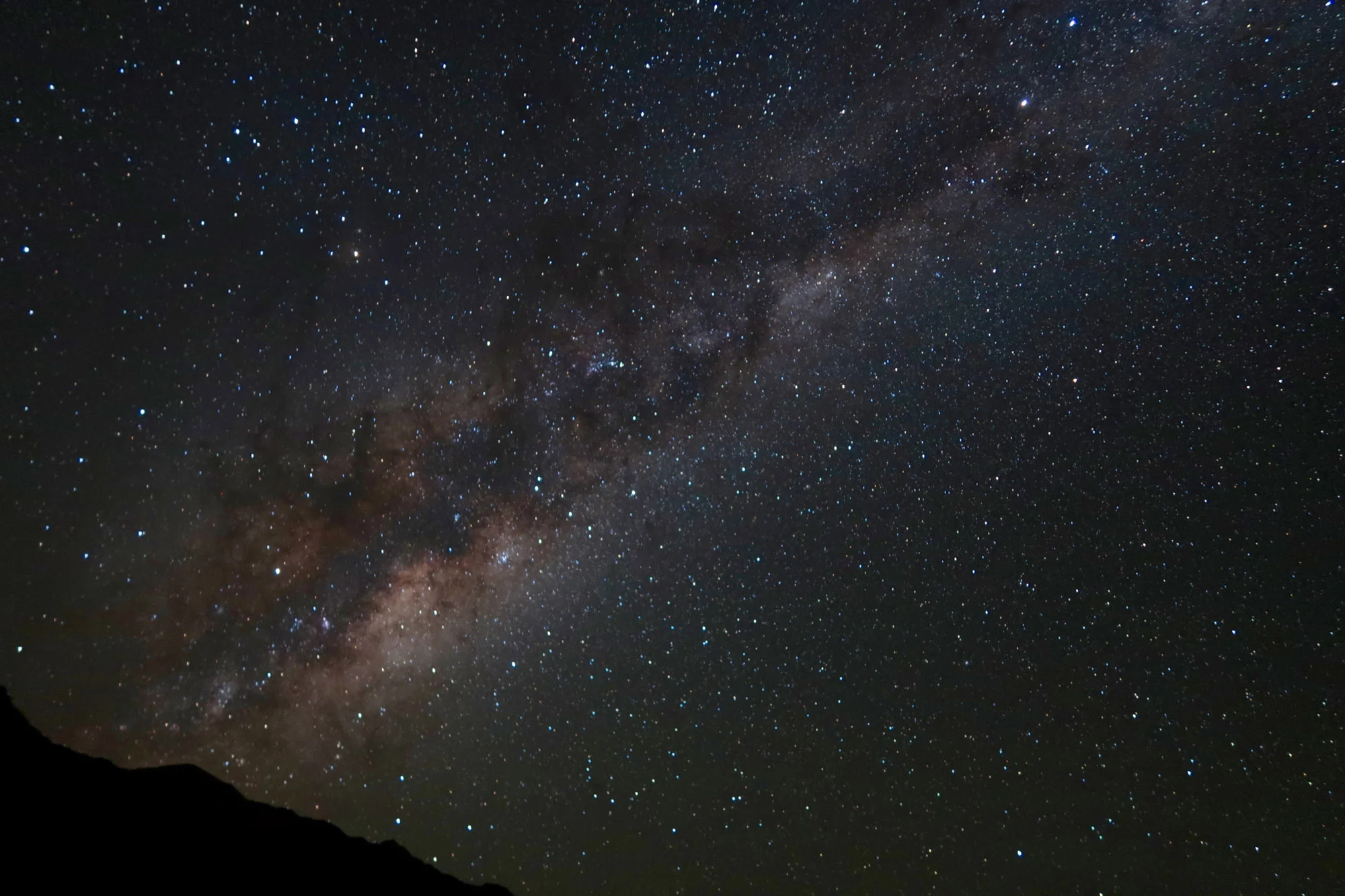Stargazing - seeing the past live!
Nothing inspires while at the same time making you feel more insignificant than star gazing, as we discovered in The Elqui Valley, Chile. This was a trip goal of mine, to experience the full wonder of our visible universe from a high altitude base in the Chilean Andes.
So let’s start with the basics.
The Andes, and specifically The Elqui Valley is a world-renowned astroligical favourite of both scientists and tourists. Set amongst the mountains the white domes perched upon a multitude of peaks look more like discarded mushrooms than state-of-the-art observatories.
At least 50km’s from the nearest city and set 10km’s back from the valley’s through road , light pollution is almost non-existent. Throw in an elevation of 1,500m minimum and this location is a no-brainer.
Finally the equipment must be top-drawer but more on that shortly.
Astronomy stations ready to search the cosmos
What a sunset before the main show
How we managed to explore the far reaches of the cosmos is in-part due to luck. Despite multiple observatories offering tours for the gawking masses we couldn’t get a spot so instead opted to park outside the gates of Pangue Observatory to simply appreciate the otherworldly wonder of space. Queue the owner turning up at 8:30pm with a 6 person private tour and offering for us to join them - for only AU$50 total I might add! Normal tours start at US$100+.
Needless to say we packed away our uncooked sausages and got involved.
The setup of Pangue is perfect. Instead of using a research dome (there are two on the property) they directed us to the main building with retractable a roof where two telescopes are rigged up and ready to go. For our viewing pleasure we were using their new 16inch lens which through pre-set GPS programming transports us visually (and in a matter of seconds) to a wealth of constellations, nebulas and suns - one of which is getting close to going Super Nova. This phenomenon, deep within our own solar system, is a bright red star with two plumes of gas shaped like elephant ears spewing out its sides; when it does go super nova the light will be brighter than a full moon. It might however not happen for a while as the last visible one was 400 years ago.
Kicking off the tour we got up-close-and-personal with our very own moon, so close in fact that you could almost see Neil Armstrong’s boot prints still sitting there.
The Moon or Darth Vadar's head...?
Lisa changed from wanting a pony to a telescope...Alan, this one's on you!
Throughout the 3hrs we were guided through the basics of astronomy from navigation by The Southern Cross (Lisa has a new respect for this and may even get the tattoo to be super-Aussie), to the depths of space where distances are beyond comprehension…here’s a few examples:
The Milky Way is 100,000 light year's in diameter
The Andromida Galaxy 2.5million light years away is visible in September
Most impressively though we were shown a galaxy where the visible light to us is 50million years old. As our guide said we were seeing the past live. Mind blown!
As if our heads weren’t already exploding with numbers, facts and scientific words the conversation then shifted to the technology being used. At 16inches across and with a price tag of US$45,000 our telescope shits all over your home-owned varieties, but in comparison to the big boys of the star-gazing world it’s like turning up to Silverstone in Fred Flintstones ‘car’. Our Elqui Valley neighbours were rocking 4-8m wide lens, and the Paranal Observatory also known as the VLT - Very Large Telescope (golden star for originality) about 300km’s north has 4 x 8m lens and incidentally is so high-tech it was used as the set for parts of the Bond movie Quantum of Solace.
Most impressive however is the new US$1.5 BILLION European Extremely Large Telescope (astronomers just love their naming conventions) which when complete will have a 39m diameter lens. I mean come on, thats almost half the length of a rugby field. When it’s ready in 2024 they'll be able to see E.T. and his cousins well before they arrive!
Magellan Galaxies, The Milky Way and our little van
Other random facts we learnt and observations made include:
Shooting stars are just grains of dust. That said they're traveling through our atmosphere at 200,000km per hour burning up which makes them visible to the naked eye. Lisa however is thoroughly unimpressed that her childhood imagery of magical stars flying across the sky has been dashed
In the Southern Hemisphere the crescent moon is on the left, its the right in the Northern Hemisphere. Sounds basic but we’d never though about that at all - now to explain the toilet flushing thing ;)
A star changes from blue to orange to red. This led Lisa to ask “Is our sun going to change to red soon and die” to which the reassuring response was “No you're ok, it's got about another 3 billion years”.
Gazing at Castor (twin stars) without a telescope has them appearing as one when in fact they're 100million km's apart which is roughly the distance from our sun to Neptune
Tarantula Nebula in Magellan Galaxy does in fact look like a giant spider
Viewing the Omega Centauri constellation of approx. 3billion stars 80,000 light year’s away. Without equipment it’s a tiny dot in the night sky easily overshadowed by it’s neighbours.
And finally The Magellan Galaxies. If you’ve ever wondered how there’s two clouds always floating in the night sky but never moving they’re the Magellan Galaxies. Visible to the naked eye they’re dwarf galaxies far smaller than our own.
To round out the evening a vision of colour, gas and immense power was displayed - Jupiter, our galaxies giant! What a way to wrap up. Needless to say the whole experience was inspiring and grounding. To observe space through a lens is to appreciate what lies beyond and therefore the minuscule place we occupy within the known universe.
Never ceases to amaze
Instagram: @thelisaphillips #somedaysherpa









